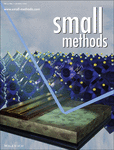Journal list menu
Export Citations
Download PDFs
Cover Picture
Front Cover: Revealing Dynamic Effects of Mobile Ions in Halide Perovskite Solar Cells Using Time-Resolved Microspectroscopy (Small Methods 1/2021)
- First Published: 04 January 2021
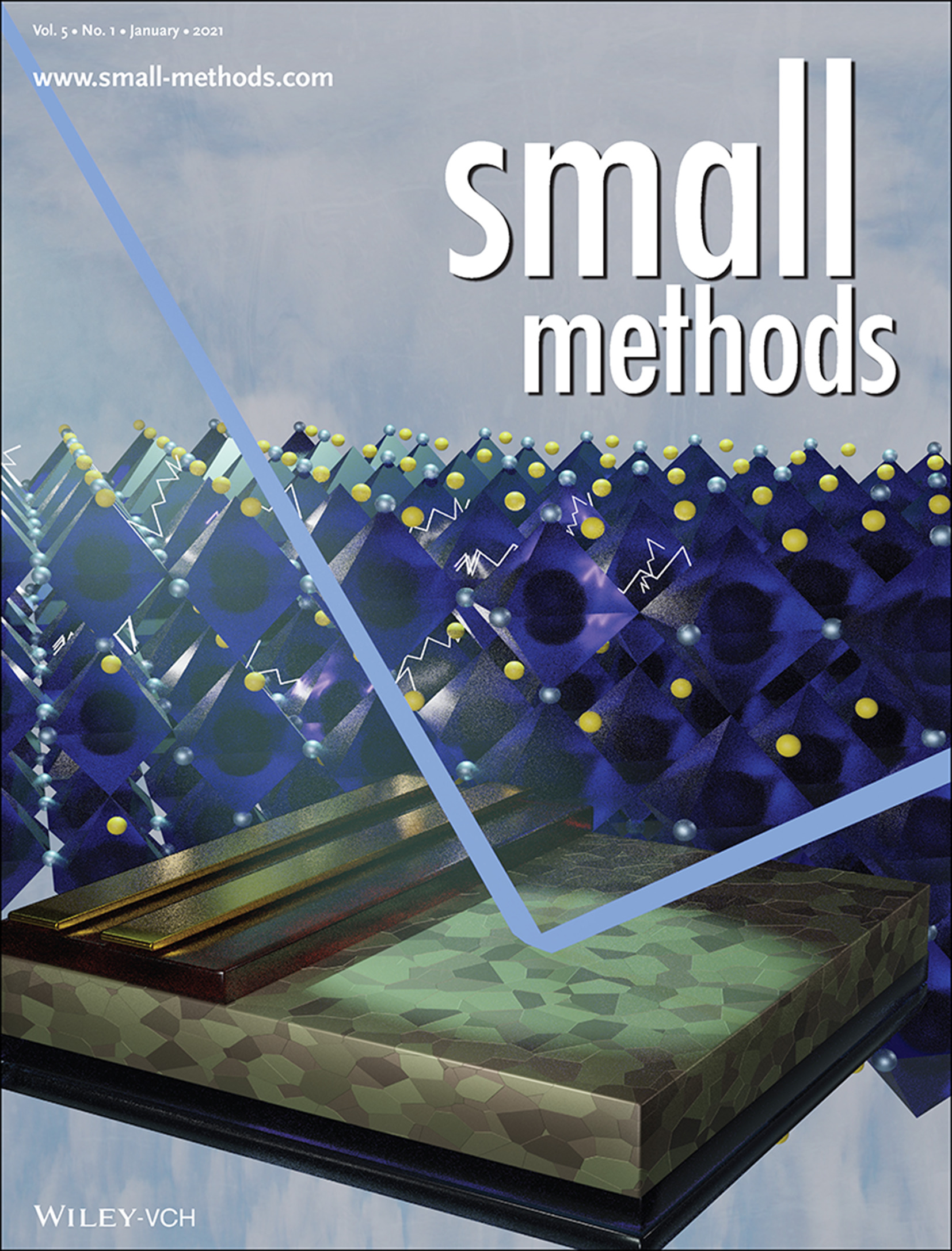
Dynamics of mobile ions are intimately correlated with the observed slow response in halide perovskites. In article number 2000731, Baohua Jia, Xiaoming Wen and co-workers review the progress of using photoluminescence micro-spectroscopy imaging as a unique tool to probe the dynamic processes of mobile ions in halide perovskites, and to reveal the underlying photophysics in both neat perovskites and devices.
Masthead
Reviews
Revealing Dynamic Effects of Mobile Ions in Halide Perovskite Solar Cells Using Time-Resolved Microspectroscopy
- First Published: 11 October 2020
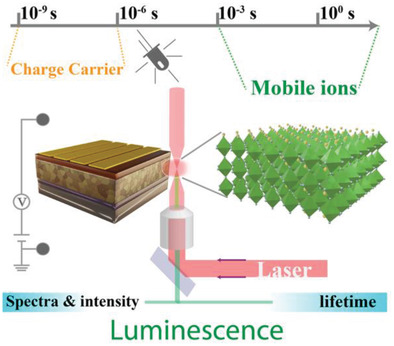
Dynamic processes of mobile ions, as well as the interaction between charge carriers and mobile ions, are intimately correlated to the observed slow response in perovskites. Photoluminescence (PL) and time-resolved PL (TRPL) imaging are unique tools to probe the dynamic processes of the slow response and the corresponding microscopic and temporal physical mechanisms.
Strategies to Develop Earth-Abundant Heterogeneous Oxygen Evolution Reaction Catalysts for pH-Neutral or pH-Near-Neutral Electrolytes
- First Published: 03 November 2020
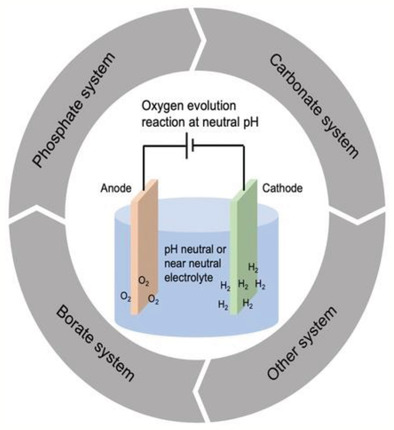
In this paper, strategies to develop high-performance oxygen evolution reaction (OER) catalysts for three major OER systems under neutral or near-neutral pH, namely, the phosphate system, the carbonate system, and the borate system, are reviewed. Methods to develop such types of catalysts are summarized. Challenges and research opportunities in this field are also discussed.
Ambient Fabrication of Organic–Inorganic Hybrid Perovskite Solar Cells
- First Published: 18 September 2020
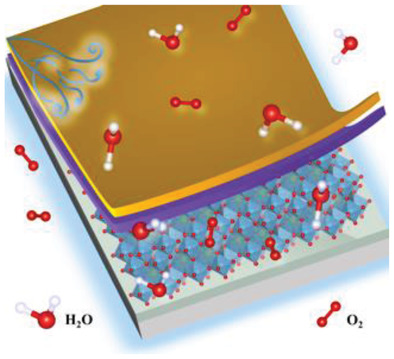
Although high-efficiency perovskite solar cells (PSCs) are typically fabricated in a glovebox, strategies to fabricate PSCs in ambient conditions hold many advantages and are often overlooked. Importantly, high-efficiency ambient PSCs can only be achieved if specific adaptations to their processing conditions are made. This review provides important design rules to fabricate efficient PSCs in ambient conditions.
High-Throughput Metagenomics for Identification of Pathogens in the Clinical Settings
- First Published: 13 December 2020
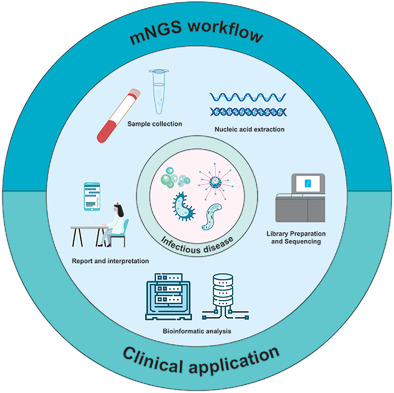
Sequencing technology is becoming increasingly available in clinic. This review sheds lights on the most commonly used metagenomic next-generation sequencing (mNGS). History and different platforms, current workflows, and applications of mNGS in pathogens identification, as well as challenges in the diagnostic metagenomics, are discussed. mNGS cannot substitute for traditional methods in the short term, but plays an irreplaceable role in microbiological detection.
Unraveling MoS2 and Transition Metal Dichalcogenides as Functional Zinc-Ion Battery Cathode: A Perspective
- First Published: 03 November 2020

Transition metal dichalcogenides (TMDs) are attractive as zinc-ion battery cathode due to their distinct physical and chemical properties. Despite the suitability of TMDs in ZIB applications, they are not widely explored. In this perspective review, key challenge of TMDs, especially for MoS2, as ZIB cathodes and proposed strategies to elicit reasonable Zn2+ storage performance are discussed.
Ambipolar 2D Semiconductors and Emerging Device Applications
- First Published: 17 November 2020
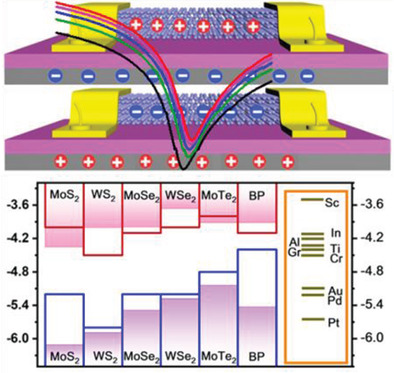
The unique properties of ambipolar 2D semiconductors enable possible breakthroughs in electronic and optoelectronic device applications. Recent progress in this field is briefly summarized, from fundamental principles, preparation methods, electrical contact engineering techniques, materials, and main performances to electronic and optoelectronic device applications like novel PN junctions and complementary metal oxide semiconductor-like circuits.
Stretchable Supercapacitors: From Materials and Structures to Devices
- First Published: 13 December 2020
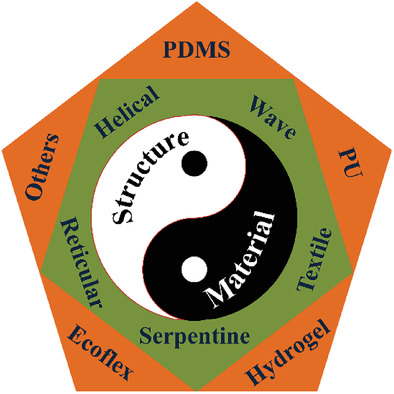
Three strategies for preparing stretchable supercapacitors are summarized emphatically—selection of elastic polymers, design of stretchable structures, and design of composite electrodes of elastic polymers and stretchable structures. This review summarizes the generally applicable experience, hoping to improve the roadmap for scientists and engineers to develop supercapacitors with high electrochemical performance and good stretchability.
Defect Electrocatalysts and Alkaline Electrolyte Membranes in Solid-State Zinc–Air Batteries: Recent Advances, Challenges, and Future Perspectives
- First Published: 06 December 2020
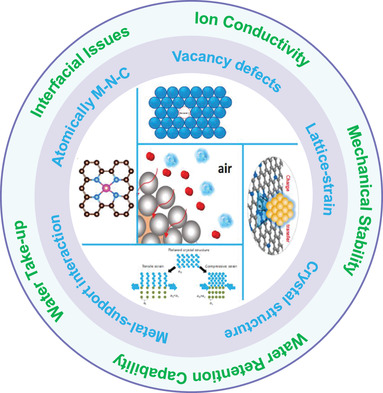
Designing suitable bifunctional air-electrodes and robust electrolyte membranes are the two major challenges in developing all-solid-state zinc–air batteries (ZABs). This review provides an in-depth discussion about recent advances, challenges, mechanisms, and design strategies for defect-rich electrocatalysts and alkaline electrolyte membranes in all-solid-state ZABs. The future perspectives to accelerate the development of all-solid-state ZABs are also proposed.
Strain Engineering in 2D Material-Based Flexible Optoelectronics
- First Published: 13 December 2020
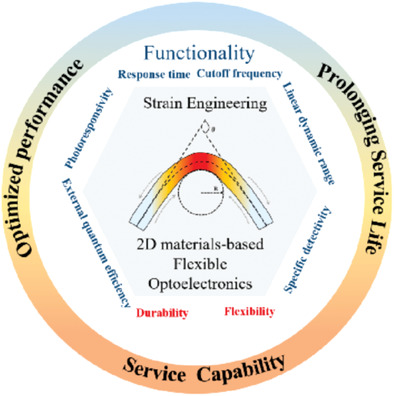
Although flexible optoelectronics based on 2D materials are successfully achieved in the past few years, how the strain affects the performance of 2D materials-based flexible optoelectronics is confused. Here, a focused review on strain engineering in 2D materials-based flexible optoelectronics to provide a perspective to develop the future application in flexible optoelectronic fields is provided.




